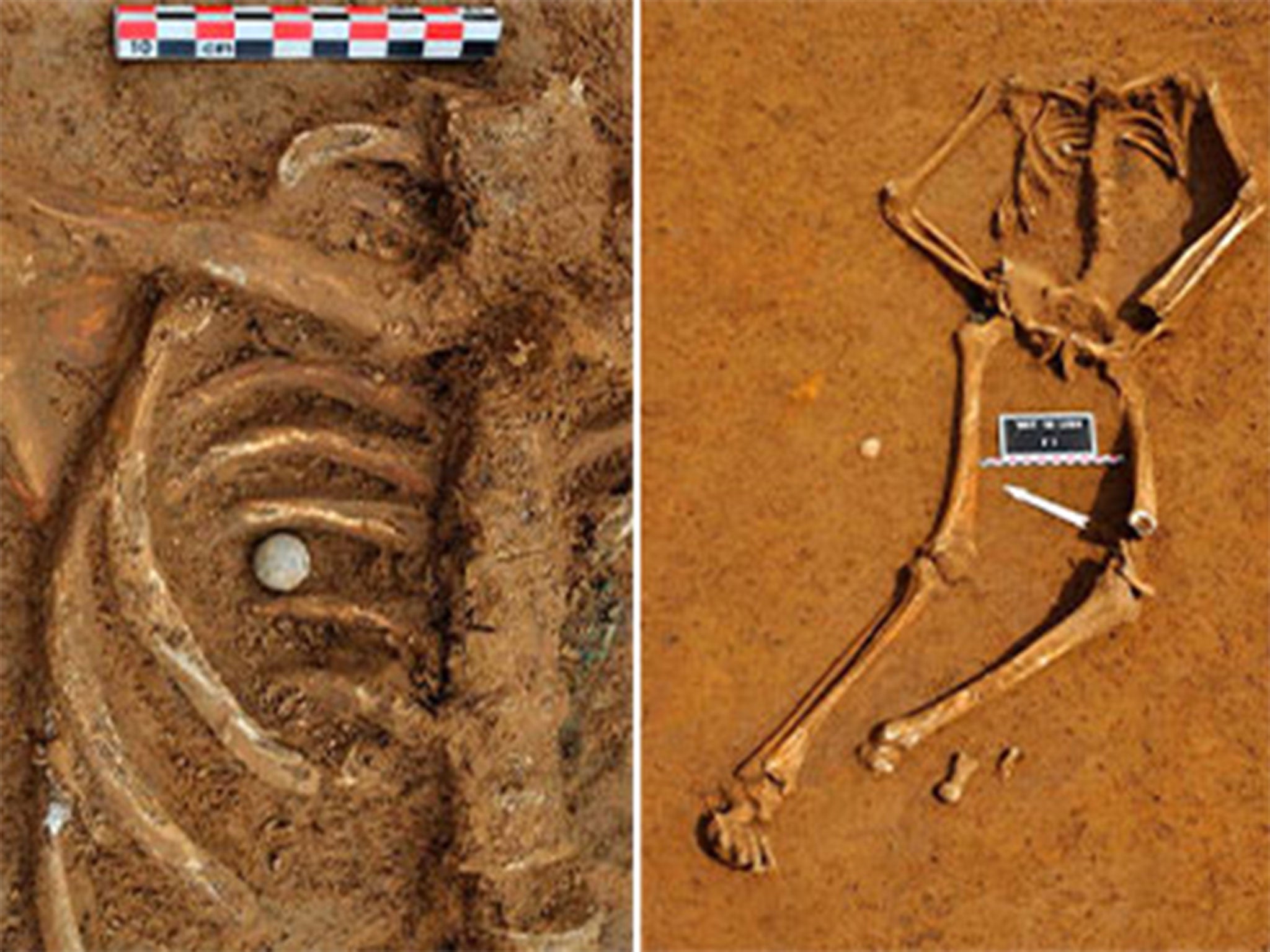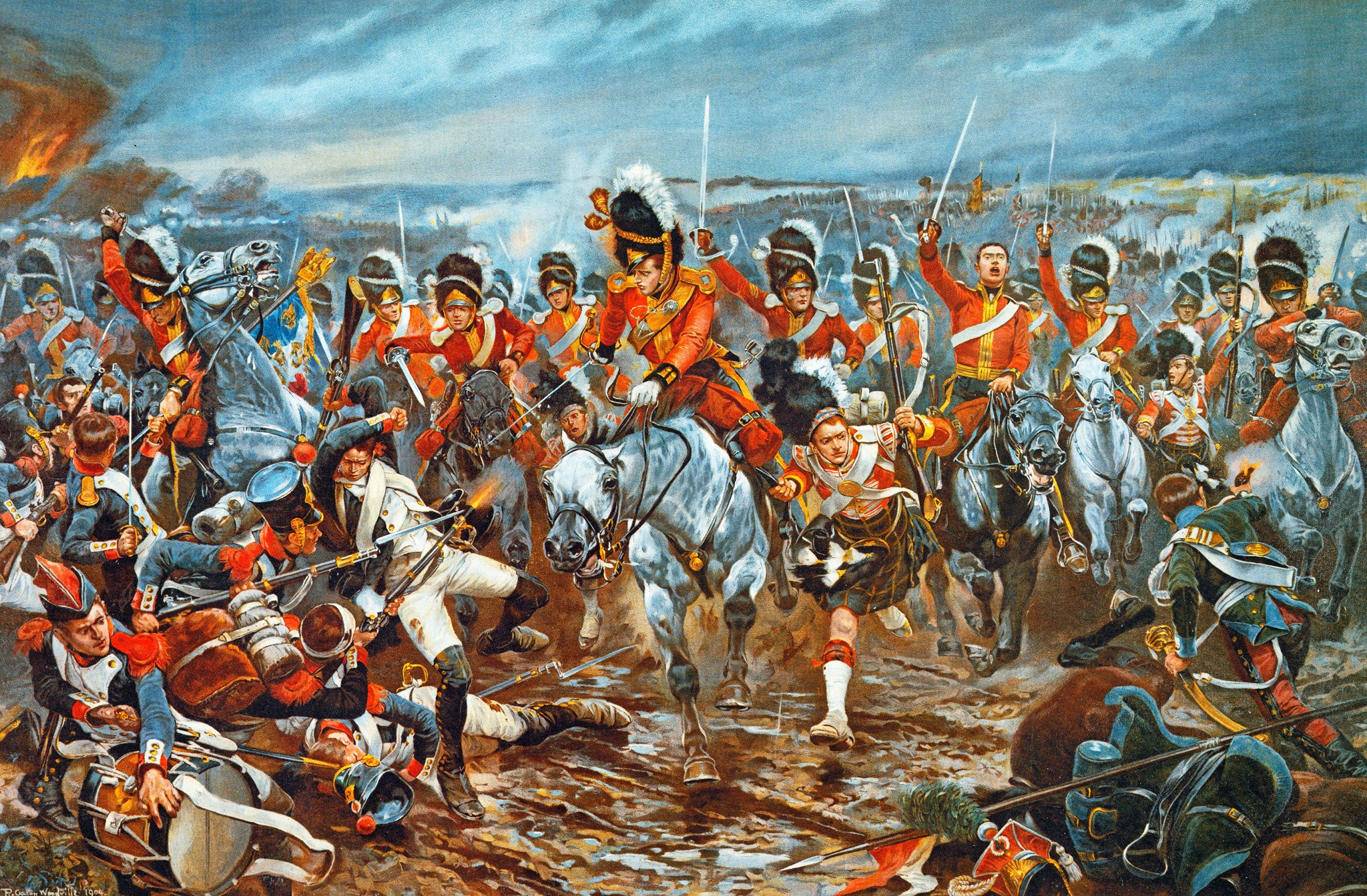German soldier who died fighting for UK in Battle of Waterloo should be removed from museum display and given dignified funeral, say historians
Archaeologist and historian Tony Pollard tweeted: 'He was a soldier. He died in battle. He deserves a grave. End of'

Your support helps us to tell the story
From reproductive rights to climate change to Big Tech, The Independent is on the ground when the story is developing. Whether it's investigating the financials of Elon Musk's pro-Trump PAC or producing our latest documentary, 'The A Word', which shines a light on the American women fighting for reproductive rights, we know how important it is to parse out the facts from the messaging.
At such a critical moment in US history, we need reporters on the ground. Your donation allows us to keep sending journalists to speak to both sides of the story.
The Independent is trusted by Americans across the entire political spectrum. And unlike many other quality news outlets, we choose not to lock Americans out of our reporting and analysis with paywalls. We believe quality journalism should be available to everyone, paid for by those who can afford it.
Your support makes all the difference.He died fighting for Britain 200 years ago at the Battle of Waterloo, felled by a French musket ball that lodged in his ribs. But the remains of the German soldier, believed to be those of Private Friedrich Brandt, are not at rest.
Instead, they are on display in a Belgian museum, part of an exhibition commemorating the bicentenary of the great battle. The decision to show the remains – discovered under a car park near the Lion Mound area of the battlefield in 2012 – has shocked historians, who are now campaigning for them to be reinterred.
Military historian Rob Schäfer said: “It doesn’t have to be a military [funeral], just a dignified funeral. He can go home to Hanover … a burial in England would be great. Anything but being in a display box.”
The remains were put on show on 23 May at the Waterloo Memorial 1815 in the Belgian province of Walloon Brabant. While the institution insists the identity of the dead soldier is unknown, it is widely believed the remains are those of Brandt, a 23-year-old hunchback from Hanover, in the King’s German Legion – exiled Hanoverians who fought as part of the Duke of Wellington’s army and who trained at Bexhill-on-Sea, East Sussex.
Mr Schäfer started a Facebook campaign called Peace for Friedrich Brandt; it has attracted almost 700 “likes” since it was set up on Thursday. “I didn’t really think that they would dare display the bones of Private Brandt in a display case in a museum,” he told The IoS. “I think the display of the bones tell us more about us in 2015 than about Private Brandt in 1815. There’s nothing to be gained from displaying them, in my opinion, it’s just useful for money reasons …. It’s not about any respect for the fallen.”

Archaeologist and historian Tony Pollard tweeted: “He was a soldier. He died in battle. He deserves a grave. End of.” Major Laurence Roche, of the British Army, added: “Campaign gathers pace to provide proper burial for #Waterloo soldier in museum display case #PeaceforFriedrichBrandt.”
Françoise Scheepers, director of the Belgian Tourist Office for Brussels and Wallonia, said: “The purpose of the memorial was not to shock but to pay tribute.”
Part of the motivation was to humanise the Napoleonic war soldiers, Mrs Scheepers said, and help younger generations understand that they were “not just [figures] in a history book” but “people made of flesh and bones”.
She added that there was no financial motivation, as the Memorial is a non-profit organisation.
The Memorial set out its reason for displaying the remains in a document: Waterloo Soldier – An Archaeological Investigation at the Heart of the Conflict. It says: “Ultimately, it seemed to everybody that the greatest homage that could be paid to him was to consider him, with the respect to which he is entitled and that the museum exhibit has sought to ensure, as the anonymous and silent representative of ... the men who perished that day in the same tragic circumstances.”
Subscribe to Independent Premium to bookmark this article
Want to bookmark your favourite articles and stories to read or reference later? Start your Independent Premium subscription today.
Join our commenting forum
Join thought-provoking conversations, follow other Independent readers and see their replies
Comments